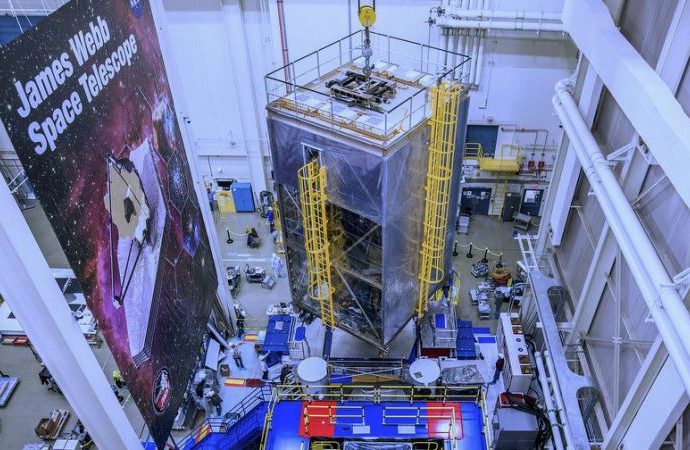Time travel is possible, in a way.
Astrophysicists are about to make the sci-fi fantasy a reality using a giant infrared telescope that can peer at star formations 13 billion light years away, seeing them just like they were that many years ago, and illuminating the recipe for the soup that is the universe.
On March 1, NASA astronomer Amber Straughn explained the James Webb Space Telescope’s ambitious scientific goals—and the many obstacles it faces—in an online lecture. Testing is near completion, project proposals from the scientific community are being collected now, and launch is planned for October 2018. “Make no mistake about it, this is really, really difficult, coming up to the edge of impossible, engineering,” she said.
The Webb telescope has been 20 years in the making and will replace the Hubble Space Telescope. Unlike Hubble, Webb relies on infrared technology—collecting heat rather than light to form images. This should allow astrophysicists to see past the cosmic dust clouds that obscure the first stars, and understand how they formed.
Scientists believe that after the Big Bang, the universe was like a hot soup of particles made up of protons, neutrons, and electrons. When it started cooling, the protons and neutrons combined into ionized atoms of hydrogen (and eventually some helium), attracting electrons and becoming neutral atoms. This allowed light to travel freely for the first time, forming stars and eventually galaxies, it’s believed.
The creation of the first stars marks the end of what astrophysicists call the “cosmic dark age.” It seems these first sources of light acted as seeds for the later formation of larger objects. Scientists suspect this happened millions of years after the Big Bang, but they don’t really know yet when or how.
Webb should help them understand better by peering back into the darkest recesses of the past, and photographing the light of stars that existed at the beginning of the cosmos. “Imagine light leaving the first stars and galaxies nearly 13.6 billion years ago and traveling through space and time to reach our telescopes,” NASA explains. “We’re essentially seeing these objects as they were when the light first left them 13.6 billion years ago.”
But much could go wrong. Webb will be over a million miles out from the Earth, four times deeper in space than anyone, or any human construct, has ever gone. And unlike the Hubble telescope, it can’t be serviced once launched. That means everything has to work perfectly once it’s out there.
At four stories tall and about as big as a tennis court, the telescope is huge. It will be folded into the rocket that will launch it, and will take six months to be fully operational. Once deployed into space, over the course of two weeks, various parts of the telescope will unfold; antennas for communications capabilities are expected to work on day two, for example. Webb should send back photos six months after launch.
Source: Yahoo News

































Leave a Comment
You must be logged in to post a comment.